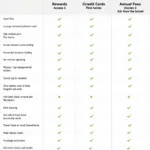Navigating the world of air travel can often feel like deciphering a secret code. One of the most important keys to understanding this world is the Iata Airport Codes List. These three-letter codes, assigned by the International Air Transport Association (IATA), are the backbone of the global aviation system. They identify airports worldwide, simplifying everything from booking tickets to tracking luggage. This comprehensive guide will delve into the world of IATA codes, explaining their importance and providing valuable resources for travelers and aviation enthusiasts.
What are IATA Airport Codes and Why Are They Important?
IATA airport codes, also known as airport codes or location identifiers, are three-letter designations assigned to airports around the world. These codes serve as a shorthand way to identify airports, streamlining communication within the aviation industry and making it easier for travelers to navigate the complexities of air travel. Imagine trying to book a flight from London to New York without a standardized code. Instead of simply using LHR and JFK, you’d have to specify London Heathrow Airport and John F. Kennedy International Airport, increasing the chances of errors and confusion.
How IATA Codes Simplify Air Travel
These codes are crucial for a variety of reasons:
- Booking Flights: When you book a flight online or through a travel agent, IATA codes are used to specify your departure and arrival airports.
- Baggage Handling: Your luggage tags display the IATA code of your destination airport, ensuring your bags reach the correct location.
- Flight Tracking: Websites and apps that track flights rely on IATA codes to identify and display flight information.
- Airport Operations: Airports use IATA codes internally for various operations, from scheduling flights to managing ground services.
For example, if you’re flying from Prince George Airport code (YXS) to Rajkot Airport code (RAJ), these codes quickly and accurately identify your departure and arrival points.
Understanding the Structure of the IATA Airport Codes List
The IATA airport codes list is a comprehensive database containing the codes for thousands of airports worldwide. The list is regularly updated to reflect changes in airport operations and new airport constructions. Understanding how these codes are structured can help you interpret them more effectively.
While some codes seem arbitrary, many follow logical patterns. Some codes are derived from the city or region the airport serves, such as LAX for Los Angeles. Others are based on historical figures or landmarks, like JFK for John F. Kennedy International Airport. Still, others reflect the phonetic spelling of the airport’s name.
“Understanding the logic behind these codes can enhance your travel experience,” says Amelia Jones, a seasoned travel agent with over 20 years of experience. “It’s like having a secret decoder ring for the aviation world.”
Finding the IATA Airport Code You Need
Several resources are available to help you find the IATA code for a specific airport:
- IATA’s Official Website: The IATA website offers a searchable database of airport codes.
- Airline Websites: Most airline websites allow you to search for airports by name or code.
- Online Travel Agencies: Travel websites like Expedia and Kayak typically display IATA codes alongside airport names.
- US airport codes list on our website.
The Evolution of IATA Airport Codes
The IATA airport codes system has evolved significantly since its inception. Originally based on a two-letter system, it expanded to three letters to accommodate the growing number of airports worldwide. This change reflects the dynamic nature of the aviation industry and IATA’s commitment to maintaining a standardized and efficient system for airport identification.
“The IATA codes are a testament to the power of standardization in a globalized world,” comments Dr. David Lee, an aviation historian and author of “The Sky’s the Limit: A History of Air Travel.” “They have played a crucial role in the growth and efficiency of the aviation industry.”
Conclusion: Mastering the IATA Airport Codes List
The IATA airport codes list is an essential tool for anyone involved in air travel. Understanding these codes empowers travelers to navigate the complexities of booking flights, tracking luggage, and understanding flight schedules. From Moncton Airport code (YQM) to Mumbai National Airport (BOM), these three-letter codes are the universal language of air travel.
FAQ
- What does IATA stand for? International Air Transport Association.
- How many IATA airport codes are there? Thousands, covering airports worldwide.
- Can IATA codes change? Yes, occasionally due to airport name changes or operational reasons.
- Are IATA codes used for anything other than airports? No, they specifically identify airports.
- Where can I find a complete IATA airport codes list? On the IATA website or various online travel resources.
- Are all airports assigned an IATA code? Most commercial airports have an IATA code.
- Why are IATA codes important for travelers? They simplify booking, baggage tracking, and flight information access.
Need help with airport codes or other travel-related queries? Contact us at +13089626264, email us at [email protected], or visit us at 404 Bothwell St, Oxford, NE 68967, USA. We have a 24/7 customer service team ready to assist you.

